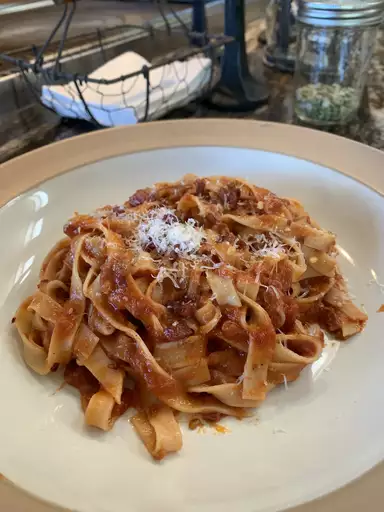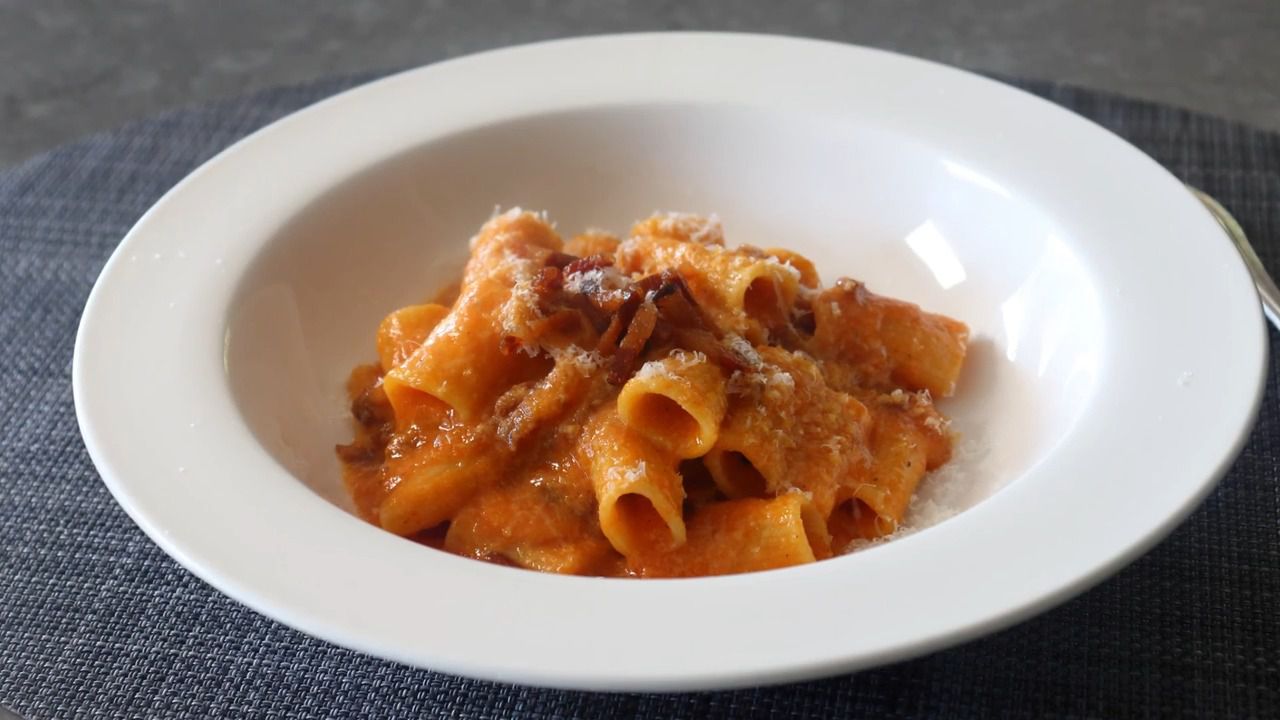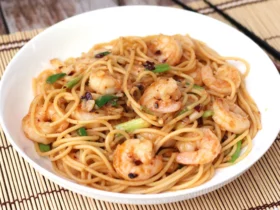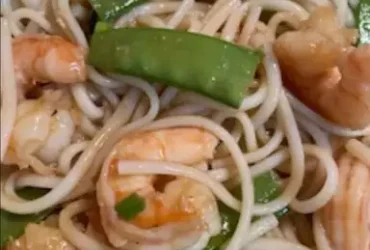Background and History
Pasta all’Amatriciana is a classic Italian dish originating from the town of Amatrice in the Lazio region. Traditionally made with guanciale (cured pork cheek), tomatoes, pecorino cheese, and a touch of chili, this dish embodies the simplicity and rich flavors of Italian cuisine. It dates back to the 18th century and has since become a beloved staple in Italian households and restaurants worldwide. Its robust flavors and straightforward preparation make it a favorite for both casual and special occasions.

Ingredients and Interesting Facts
Guanciale is the star ingredient, providing a unique, rich flavor that distinguishes this dish from other tomato-based pasta recipes. Pecorino Romano, a hard sheep’s milk cheese, adds a sharp, salty note that balances the sweetness of the tomatoes. The use of chili flakes gives the dish a subtle heat, enhancing the overall flavor profile.
Recipe Guide
Serves
- 4 people
Time
- Preparation Time: 10 minutes
Cooking Time
- 30 minutes
Ingredients
- 12 ounces (340 grams) bucatini or spaghetti
- 4 ounces (115 grams) guanciale, diced (can substitute pancetta if necessary)
- 1 tablespoon olive oil
- 1 small onion, finely chopped
- 1 can (14 ounces) crushed tomatoes
- 1/2 teaspoon red pepper flakes (adjust to taste)
- 1/2 cup grated Pecorino Romano cheese
- Salt and black pepper to taste
- Fresh basil or parsley for garnish (optional)
Instructions
Cook the Pasta
- Bring a large pot of salted water to a boil.
- Cook the bucatini or spaghetti according to package instructions until al dente. Reserve 1/2 cup of pasta water, then drain and set aside.
Prepare the Sauce
- In a large skillet, heat the olive oil over medium heat.
- Add the diced guanciale and cook until it becomes crispy and golden, about 5-7 minutes.
- Remove the guanciale with a slotted spoon and set aside, leaving the rendered fat in the skillet.
Cook the Onions
- Add the chopped onion to the skillet and cook until soft and translucent, about 5 minutes.
Add Tomatoes and Seasoning
- Stir in the crushed tomatoes and red pepper flakes.
- Simmer the sauce for about 10 minutes, allowing it to thicken slightly.
Combine Pasta and Sauce
- Add the cooked pasta to the skillet with the sauce.
- Toss to coat the pasta evenly, adding reserved pasta water as needed to achieve the desired consistency.
Finish the Dish
- Stir in the cooked guanciale.
- Remove from heat and mix in half of the grated Pecorino Romano.
- Season with salt and black pepper to taste.
Serve
- Divide the pasta among plates.
Sprinkle with the remaining Pecorino Romano and garnish with fresh basil or parsley if desired.
Nutrition Facts (per serving)
- Calories: 450
- Protein: 18g
- Carbohydrates: 50g
- Fat: 20g
- Saturated Fat: 7g
- Cholesterol: 30mg
- Sodium: 800mg
- Fiber: 4g
- Sugars: 6g
Notes
- For an authentic experience, try to find guanciale and Pecorino Romano, which are key to the traditional flavor.
- Adjust the amount of red pepper flakes based on your heat preference.
Allergy Warning
- This recipe contains gluten (pasta) and dairy (Pecorino Romano cheese). Substitute gluten-free pasta and dairy-free cheese alternatives if needed.
- Ensure all ingredients, especially guanciale or pancetta, do not contain any hidden allergens if you have specific dietary restrictions.
What does pasta amatriciana mean?
Pasta all’Amatriciana means “pasta in the style of Amatrice,” referring to a pasta dish originating from the town of Amatrice in Italy. It features a sauce made with guanciale, tomatoes, and Pecorino Romano cheese.
What does amatriciana taste like?
Amatriciana has a rich, savory flavor with a balance of sweetness from the tomatoes, saltiness from the Pecorino Romano cheese, and a slight heat from the red pepper flakes. The guanciale adds a distinct, smoky depth to the dish.
What is the difference between amatriciana and Arrabiata?
Amatriciana and Arrabiata are both tomato-based sauces, but Amatriciana includes guanciale and Pecorino Romano cheese, whereas Arrabiata is a simpler, spicier sauce made with tomatoes, garlic, and red chili peppers without meat or cheese.
What goes well with amatriciana?
Amatriciana pairs well with a fresh green salad, crusty bread, and a glass of red wine such as Chianti or Montepulciano. For a heartier meal, it can be served alongside grilled vegetables or roasted meats.
What is the difference between pasta amatriciana and carbonara?
Pasta Amatriciana uses a tomato-based sauce with guanciale and Pecorino Romano cheese, while Carbonara is made with a creamy sauce of eggs, Pecorino Romano, guanciale, and black pepper. Carbonara does not include tomatoes.
What is the history of pasta all amatriciana?
Pasta all’Amatriciana originated in the town of Amatrice in Italy’s Lazio region. It dates back to the 18th century and was initially a shepherd’s dish made with simple ingredients like guanciale, pecorino, and pasta. Tomatoes were later added after their introduction to Italian cuisine.
What is the name of pasta amatriciana?
The full name of the dish is “Pasta all’Amatriciana,” which directly refers to its origin in Amatrice. It is sometimes also referred to simply as “Amatriciana.”
What can I substitute for amatriciana?
If you can’t find guanciale, you can substitute with pancetta or unsmoked bacon. For Pecorino Romano cheese, Parmesan can be used as a substitute, though the flavor will be slightly different.
Does amatriciana have wine?
Traditional Amatriciana does not include wine in the sauce, though some variations may add a splash of white wine for additional depth of flavor.
How do you pronounce all amatriciana?
All’Amatriciana is pronounced “ahl-ah-mah-tree-CHAH-nah.”
- Best Dun & Bradstreet (DNB) Alternatives for 2025 - April 24, 2025
- Best Seamless.ai Alternatives for 2025 - April 22, 2025
- Best Coldlytics Alternatives for 2025 - April 22, 2025














